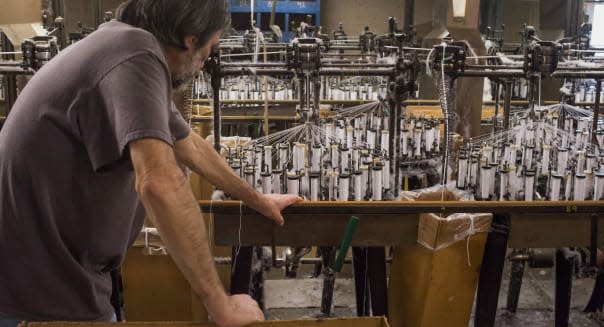Service Sector Slows; Labor Market Remains Resilient

By Lucia Mutikani
WASHINGTON -- U.S. service sector activity slowed in November but remained at levels consistent with a steady pace of economic growth for the fourth quarter, a business survey showed Thursday.
Other data reported a small increase in first-time applications for unemployment benefits last week, but planned job cuts announced by companies in November were the fewest in 14 months.
With the labor market showing resilience, economists say it is almost certain the Federal Reserve will raise interest rates at the Dec. 15-16 meeting for the first time in nearly a decade.
%VIRTUAL-pullquote-It will take some pretty bad economic numbers for the Fed to pull back from the brink.%"It will take some pretty bad economic numbers for the Fed to pull back from the brink," said Joel Naroff, chief economist at Naroff Economic Advisors in Holland, Pennsylvania.
Fed Chair Janet Yellen told lawmakers Thursday that the central bank was close to lifting its key overnight interest rate from near zero. Yellen gave an upbeat view of the economy, saying "growth is likely to be sufficient over the next year or two to result in further improvement in the labor market."
The Institute for Supply Management said Thursday its index of non-manufacturing activity fell to 55.9 last month from a reading of 59.1 in October. A reading above 50 indicates expansion in the service sector.
The new orders index dropped fell 4.5 points to 57.5 last month. There were also declines in measures of service sector employment, backlogs and export orders. Deliveries are slowing and inventories are still considered high which could constrain order growth in the months ahead.
Twelve service industries, including real estate, retail, transportation and warehousing, finance and insurance and public administration reported growth last month. The six industries reporting contraction included wholesale trade, utilities and agriculture.
The report came after news this week from ISM that the manufacturing sector contracted in November for the first time in three years. Still, economists said the soft service sector survey didn't signal a slowdown in gross domestic product growth from the third quarter's 2.1 percent annual rate.
"Even after this drop off, the latest figure was still consistent with real GDP growth of around 2.25 percent," said Daniel Silver, an economist at J.P. Morgan in New York.
There was little market reaction to the economic data, but the U.S. dollar dropped to a near one-month low against the euro after the European Central Bank unveiled a smaller interest rate cut and bond purchases than investors had anticipated. Stocks and Treasury debt prices were trading lower.
Labor Market Resilience
In second report, the Labor Department said initial claims for state unemployment benefits increased 9,000 to a seasonally adjusted 269,000 in the week ended Nov. 28.
It was the 39th straight week that claims held below 300,000, which is normally associated with a healthy labor market. Claims are near levels last seen in 1973 and there is little room for further declines as the labor market normalizes.
The four-week moving average of claims, considered a better measure of labor market trends as it strips out week-to-week volatility, fell 1,750 to 269,250 last week.
%VIRTUAL-WSSCourseInline-876%In a third report, global outplacement consultancy Challenger, Gray & Christmas said U.S.-based companies announced 30,953 job cuts in November, the smallest amount since September 2014 and down 39 percent from October. There were 1,355 oil-related job cuts, the fewest since June.
Last week's jobless claims have no bearing on Friday's Labor Department employment report for November as they fall outside the survey period. According to a Reuters survey of economists, nonfarm payrolls likely increased 200,000 last month after rising 271,000 in October. The unemployment rate is forecast unchanged at a 7½-year low of 5 percent.
"The claims data suggest that the trend in employment growth remains more than strong enough to keep the unemployment rate trending down over time," said Jim O'Sullivan, chief U.S. economist at High Frequency Economics in Valhalla, New York.
In a fourth report, the Commerce Department said new orders for manufactured goods increased 1.5 percent after two straight months of declines, on rising demand for transportation equipment and a range of other goods.
